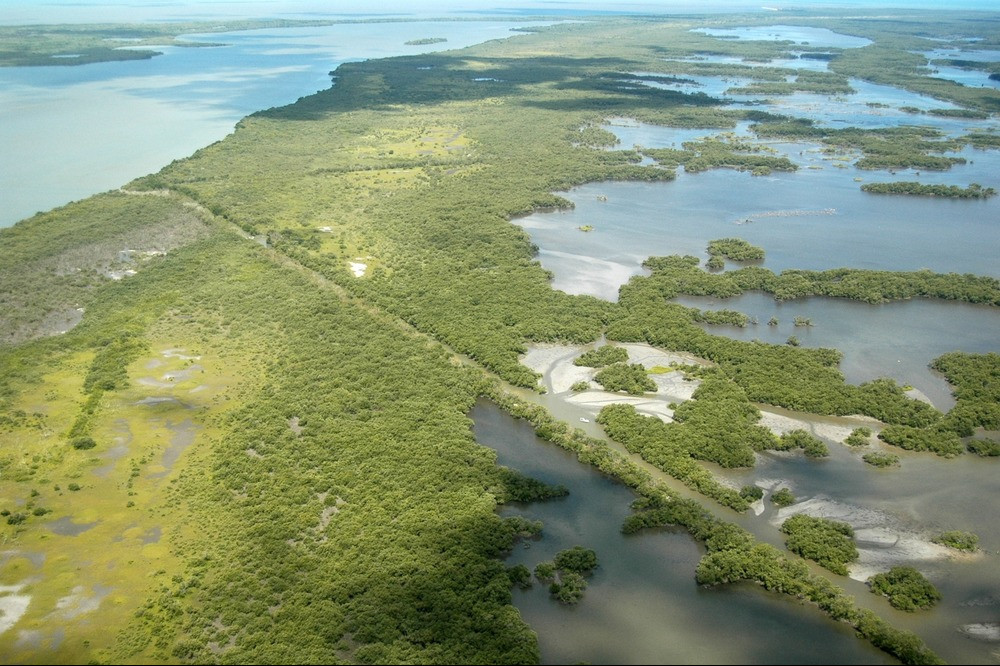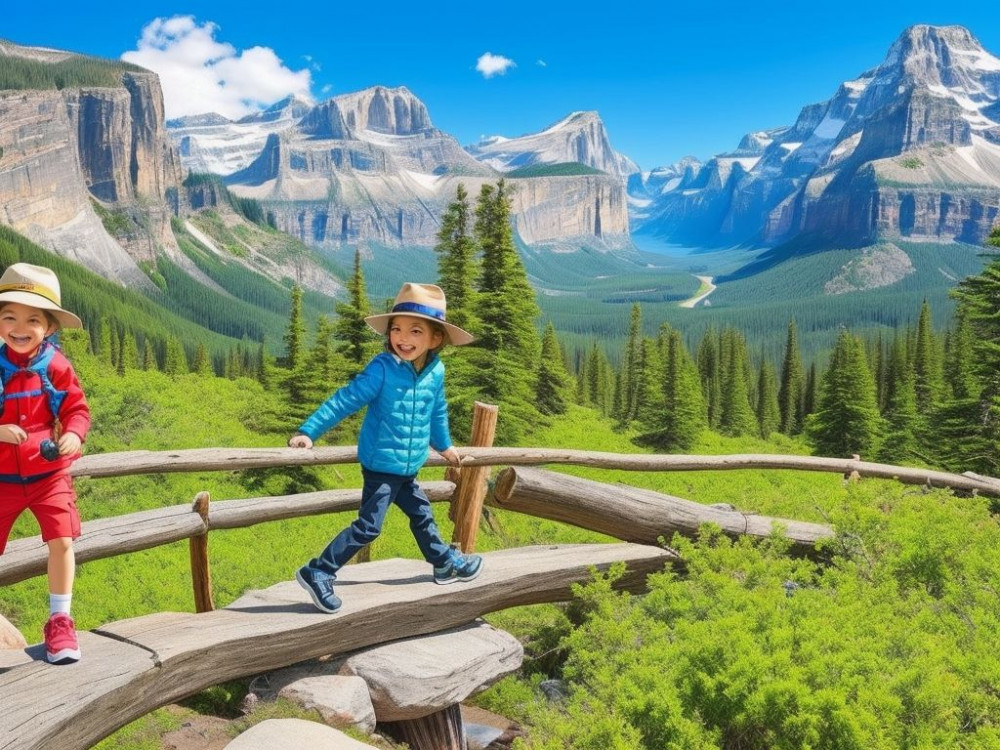Thirsting for wild adventure?
Everglades National Park is the perfect place for you!
Here, you can explore an untouched subtropical paradise.
With gator-filled waters and miles of trails, there’s no shortage of outdoor activities to experience.
Come and discover the beauty of this amazing park!
Introduction
Everglades National Park: a captivating paradise of mesmerizing landscapes and abundant biodiversity. Step into another world and witness the intricate balance between land and water.
Glide with playful manatees, soar with vibrant birds, and try to catch a glimpse of an elusive Florida panther.

(Photo by NPS / Rodney Cammauf)
Support conservation efforts and visit this magnificent park. Forge a deeper connection with nature and contribute to the preservation of this extraordinary natural wonder. Get lost in the magic – it’s all part of the adventure.
Location and History
This unique and historic place, the Everglades National Park, is located in southern Florida. It covers 1.5 million acres of different ecosystems, from swamps to forests. The park was formed in 1947 to protect the endangered wildlife living there.
For thousands of years, Native Americans inhabited the area. They used its natural resources for survival. After that, Europeans came in the 16th century, followed by hunters and farmers who understood the land’s potential.
Now, the park faces issues due to human activities and climate change. To revive and protect the Everglades, efforts are being made to restore water flow, and to control invasive species.
Pro Tip: Visiting the Everglades? Don’t forget to bring mosquito repellent! Enjoy this special spot, but remember to respect its delicate environment.
Geography
The Everglades National Park is special! It sits on 1.5 million acres of South Florida land. It is the biggest subtropical wilderness in the United States. It is known as a “river of grass” since its water moves slowly.
There are many habitats, like freshwater marshes, sawgrass prairies, and cypress swamps. Plus, estuaries and brackish waters line the coast.
This place is teeming with life! It is a network of waterways that host an array of animals and plants. Did you know? The source for this info is the Everglades National Park website.
Sadly, climate change is a major issue here. It is like a never-ending sauna. Invasive species and rising sea levels are unfortunate consequences.
Climate
Everglades National Park’s climate is hot and humid in summer, mild in winter, and wet and dry throughout the year. Average highs range from 80s to 90s Fahrenheit.
From May to October, the park experiences heavy rainfall and thunderstorms, contributing to its unique ecosystem of marshes and swamps.
On average, the park gets 60 inches of rainfall annually, but there’s variation within the park due to its size and diverse landscapes.
The climate has been shaped by natural processes for thousands of years, like hurricanes, sea level changes, and fluctuating rain patterns. These factors have created a complex, fragile ecosystem for plants and animals.
Climate change and human impact have posed challenges to the park. Rising sea levels threaten low-lying areas, and changes in precipitation can disrupt natural water flows.
Conservation measures and adaptive management strategies are in place to mitigate these impacts.
To ensure Everglades National Park’s preservation, understanding and monitoring its climate is essential.
Flora and Fauna

At Everglades National Park, the flora and fauna showcase the richness and diversity of the ecosystem. With lush vegetation and a plethora of animals, it’s a nature-lovers haven. Here’s an overview of the incredible flora and fauna:
Flora:

- Sawgrass: This tall grass creates prairies that are homes to many species.
- Mangroves: These trees grow in brackish water and protect coasts, while also serving as a nursery for marine life.
- Cypress trees: Towering over the landscape, these ancient trees are habitats for birds, reptiles, and small mammals.
- Orchids: Their vibrant colors and delicate blooms add beauty to the park’s plant life.
Fauna:

- American alligator: This reptile can be seen sunning by water bodies.
- Florida panther: An endangered species, they roam the park, showing its importance in preserving biodiversity.
- West Indian manatee: These herbivorous mammals seek refuge in the park’s warm freshwater springs.
- Osprey: These raptors soar above the marshes, fishing for meals.
Plus, there are many other unique species in the park. It is a treasure trove of biodiversity. To rejuvenate ecosystems and preserve endangered species, water levees have been removed and wetlands reconnected.
This is a testament to the commitment to conservation and the significance of the park as a haven for wildlife.
Everglades National Park continues to be a sanctuary for plants and animals. Its preservation ensures future generations can experience its beauty and wonder. Who needs an amusement park when you can get a thrill from an ecosystem that could eat you alive?
Ecosystem
The Everglades National Park – a vibrant, complex ecosystem for diverse flora and fauna! It is home to alligators, herons and manatees.
This Park has different ecosystems, such as freshwater sloughs, estuarine mangrove forests, and hardwood hammocks. Each one has unique plants and animals that have adapted to their environment.
For example, the freshwater sloughs have slow-moving water and marshy vegetation. It is an ideal breeding ground for birds like egrets and ibises. The estuarine mangrove forests are along the coastlines and provide shelter for fish.
This protected area was established in 1947. Since then, people have been working hard to preserve its biodiversity and ecosystems. Today, it’s a reminder of the importance of conserving our natural heritage for future generations.
Conservation
Conservation is key for the Everglades National Park. There are efforts to protect and restore the ecosystem, so its diverse plants and animals can survive. Let’s take a peek at the initiatives that promote this.
Initiatives to Conserve Everglades National Park:
- Wetland Restoration: Bringing back the natural water flow and improving the habitats.
- Invasive Species Management: Controlling and removing non-native plants and animals.
- Water Conservation: Managing the water to keep a balanced hydrological system.
- Wildlife Protection: Enforcing rules to look after endangered species.
- Environmental Education: Raising awareness of the importance of conservation.
Park authorities join forces with scientists, local communities, and government agencies to tackle new issues. They try to reduce pollution and make sure sustainable practices are followed.
Pro Tip: Show your support for the Everglades by being a responsible tourist. Dispose of waste properly, don’t disturb wildlife, and stick to the trails. By taking action, you can help preserve this special ecosystem.
Recreation
Seize the moment in Everglades National Park! Go on guided tours and hikes, take an airboat ride, and watch over 350 bird species. Don’t forget to witness the beautiful sunsets at scenic viewpoints! Come join us for an unforgettable adventure – you’ll be screaming “Crikey!” louder than Steve Irwin!
Tourism
Tourism is an important part of the Everglades National Park, drawing guests from around the world. Its unique ecosystem provides a lot of activities and experiences for nature lovers.
Airboat Tour and Wildlife Show
- Tours let visitors get up close with its amazing flora and fauna.
- Adventurous sorts can explore the many hiking trails, to enjoy the natural beauty.
- If you’d like something more relaxed, try airboat rides and take in the park’s iconic landscapes.
The Everglades National Park is also home to rare species like the Florida panther and West Indian manatee. It is a great spot for wildlife watchers and photographers who want to capture special moments.
Miami: Everglades Safari Park Airboat Tour and Park Entrance
Fun Fact: The Everglades cover an impressive 1.5 million acres in South Florida. So come and explore its untouched beauty and abundance of wildlife – it’s like looking into the future!
Future
Everglades National Park has immense potential for conservation and preservation. Actions to sustain the ecosystem are taking place. Strategies to address habitat loss and other issues have been introduced.
Research partnership with local communities is happening to keep balance between humans and nature.
Climate change resilience is a focus for future success. Technology and scientific knowledge is being used to anticipate and reduce threats.
A 1947 Congressional fund for land acquisition was a visionary decision. It ensured the park’s size grew, and protected its ecosystems. This has set a pattern for protected areas to evolve over time.
FAQ
What is Everglades National Park?
Everglades National Park is a vast, protected area in southern Florida that is renowned for its unique ecosystem. It is home to marshes, tropical and subtropical hammocks, mangrove forests, and a diverse range of plant and animal species.
How large is Everglades National Park?
Everglades National Park covers an area of approximately 1.5 million acres, making it the third-largest national park in the contiguous United States.
What are the main attractions in Everglades National Park?
The main attractions in Everglades National Park include airboat tours, hiking trails, wildlife spotting opportunities, canoeing and kayaking, camping, and educational programs. Visitors can also explore the park’s unique wetlands and go on guided tours.
What is the best time to visit Everglades National Park?
The best time to visit Everglades National Park is during the dry season, which typically spans from November to April. The weather is pleasant, there are fewer mosquitoes, and wildlife is more active during this time.
Are there any safety precautions visitors should be aware of?
Yes, visitors should be cautious of alligators and snakes, especially near bodies of water. It is important to keep a safe distance and refrain from feeding or approaching wildlife. It is also recommended bringing sunscreen, insect repellent, and sufficient water while exploring the park.
Can I camp in Everglades National Park?
Yes, camping is allowed in designated campgrounds within Everglades National Park. Reservations are recommended, especially during the peak season. The park offers various camping options, including tent camping, RV camping, and backcountry camping.




Leave a Reply